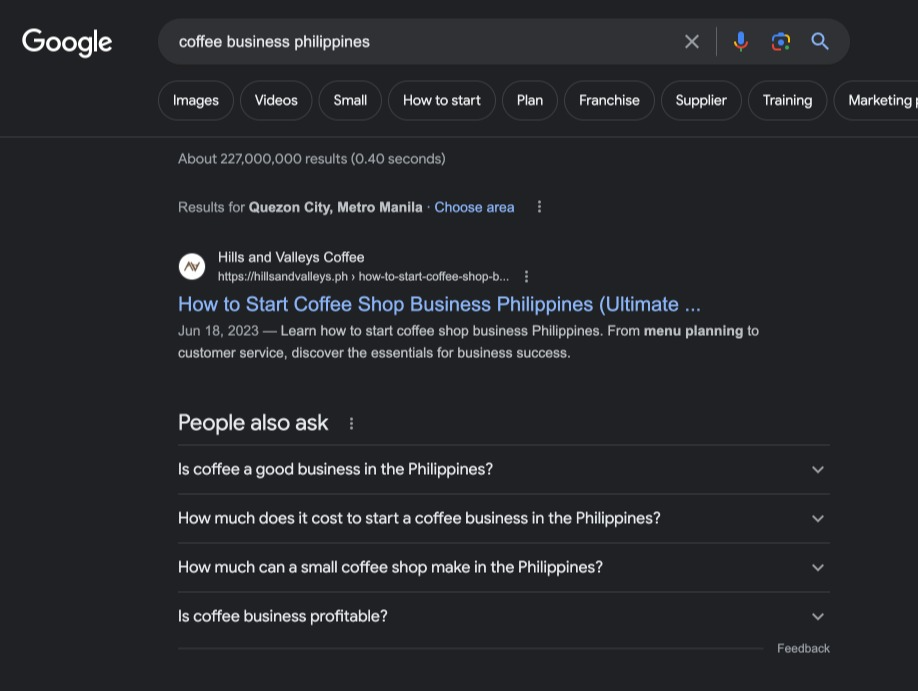by Venchito Tampon Jr | Last Updated on August 29, 2023
Content writing has two main goals: to satisfy web users with what they are looking for and assisting businesses with their online marketing objectives.
Most online marketers hit the first one. However, we rarely see content marketing campaigns focusing on helping businesses drive results.
Learning to write content that ranks isn’t easy, which becomes leverage for high-level content marketers to differentiate their work from their contemporaries.
They are given that they don’t only write for publishing’s sake but also provide value to clients by ranking content for their target keywords, which drives significant organic traffic and conversions for their website/s.
In this guide, I’ll walk you through my step-by-step process of writing content that ranks. I’ve used it for our clients, our link building blog (as a test), brick-and-mortar businesses, and eCom site.
How to Write Content That Ranks (6 Simple Steps)
1. Choose a Keyword With Weaker Competitors
Without a target keyword, you can’t rank content on Google’s search engine results pages (SERPs).
By having a keyword on the most critical places on your page, search engines can quickly determine the relevance and context of your content.
However, not all keywords are worth pursuing.
The most frustrating part of content marketing is creating comprehensive content about a specific topic. Yet, you won’t have a chance to rank, given the level of competition among its ranking pages.
I always recommend going after keywords where your site can have the best fight on Google’s SERPs.
The more authoritative the websites that rank from a Domain Rating (DR) perspective, the harder it is to rank because you need many backlinks.
You can use Ahrefs to see weaker spots on Google’s SERPs quickly.
If you start with Keyword Explorer, filter the list of keywords by a DR number to get keywords with weaker competitors.
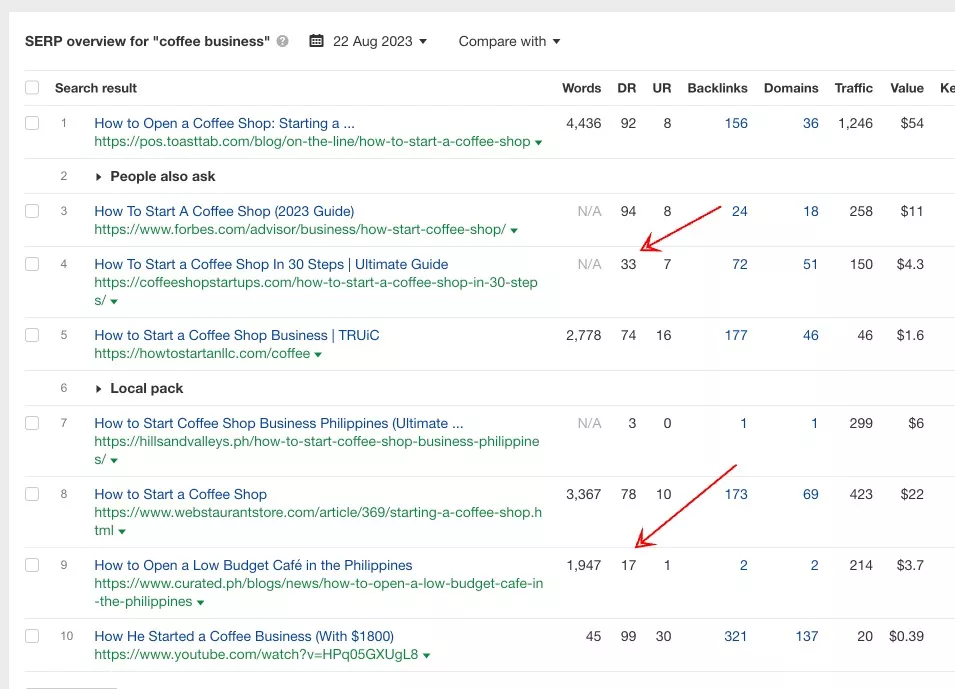
You can also use Ahrefs’ Content Explorer to generate content ideas for your blog. Use the same filter to see lower-authority pages.
Collate all these keywords and content ideas in a spreadsheet and later choose which one you’d want to write content about.
You can also populate your list by checking Google autocomplete or related keywords at the end of Google’s SERPs.
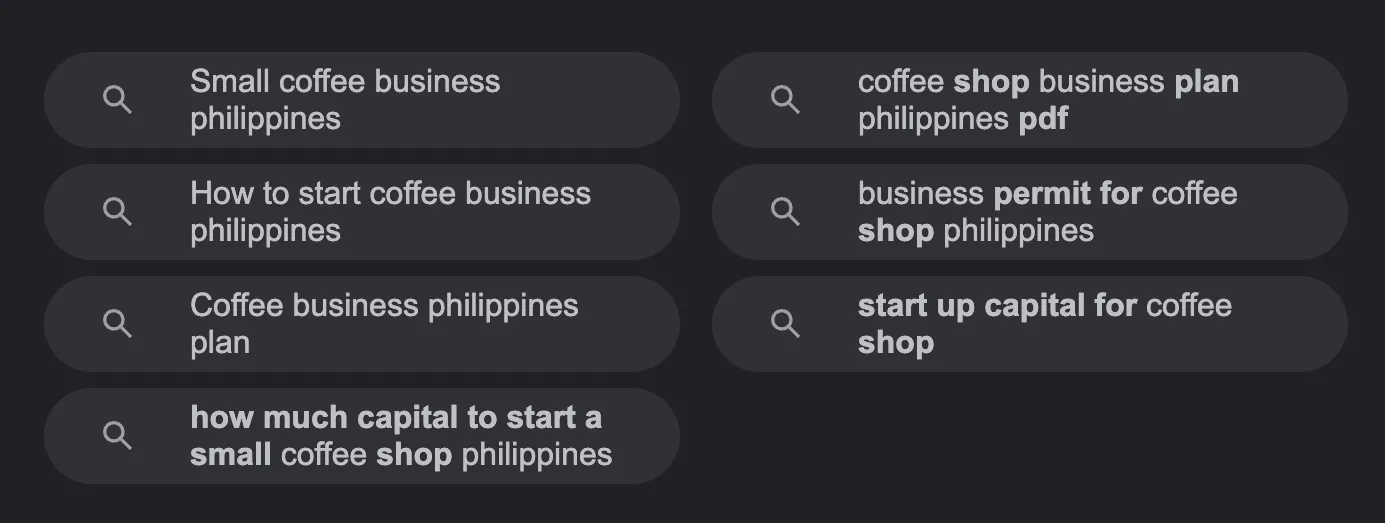
Most of the keywords you’ll find here don’t have high search volume, yet they are easier to rank with solid content.
The main objective in finding keywords with weaker competitors is to quickly rank for them with your content so you can build enough momentum for your SEO campaign. Or, if you’re servicing SEO clients, you can send initial reports of quick SEO wins via ranking for long-tail keywords instead of eyeing for head terms with no chances of winning (initially).
In my recent post on how to get your business on top of Google search, I’ve mentioned the importance of targeting long tail keywords.
The compiled constant effect of ranking for multiple keywords at the start of an SEO campaign boosts momentum to go after other keywords with a little stronger competition.
2. Do a search intent analysis for the keyword.
Most SEOs should have noticed this part of the process, going straight to writing content for the keyword.
Search intent analysis is crucial in understanding what the searchers are looking for and how you can create the best content to serve their needs (intent).
There are four main types of search intent:
- Informational (Awareness) – the search user wants to learn about a topic. (e.g., how do espresso machines work)
- Navigational (Interest) – the search user is curious about a particular brand or is looking for a specific brand/page (e.g., Ahrefs login)
- Commercial Investigation (Desire) – the search user is looking to solve a problem (e.g., best commercial espresso machines)
- Transactional (Action) – the search user wants to take an action or purchase a product/service (e.g., buy espresso machines).
Figure out the search intent type of a keyword.
Go even further. Do a Google search for the keyword. See the content format of each top-ranking page.
For instance, Google favors “how-to” guides for the key phrase, “coffee business Philippines”.
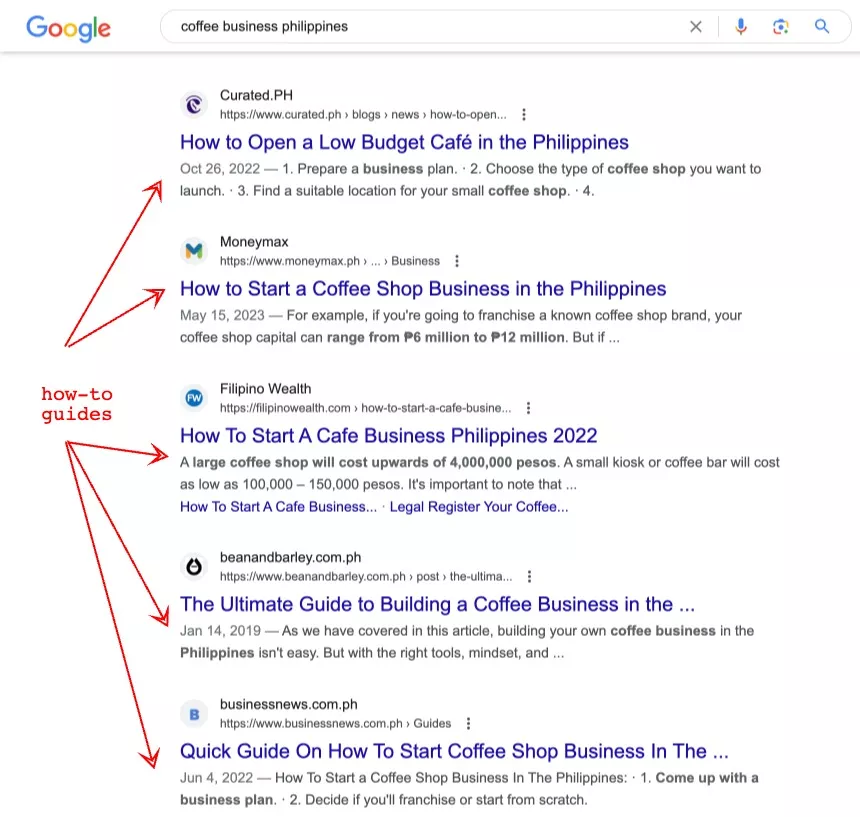
So, writing content that ranks for this keyword requires a comprehensive step-by-step process on how to start a coffee shop business.
3. Plan your content.
By planning your content, you eliminate all the unnecessary stuff and include the best points, structure, and flow that will best satisfy your readers.
You do that by first researching your top competing pages.
You want to see what makes the top-ranking pages deserving to rank for the keyword. Check and see how well-optimized the articles are.
I use the Detailed tool to see their basic outline quickly.
I’ve taken note of all headings and subheadings for the top 3 rankings articles. Then, I create a master outline combining all these headings for my content.
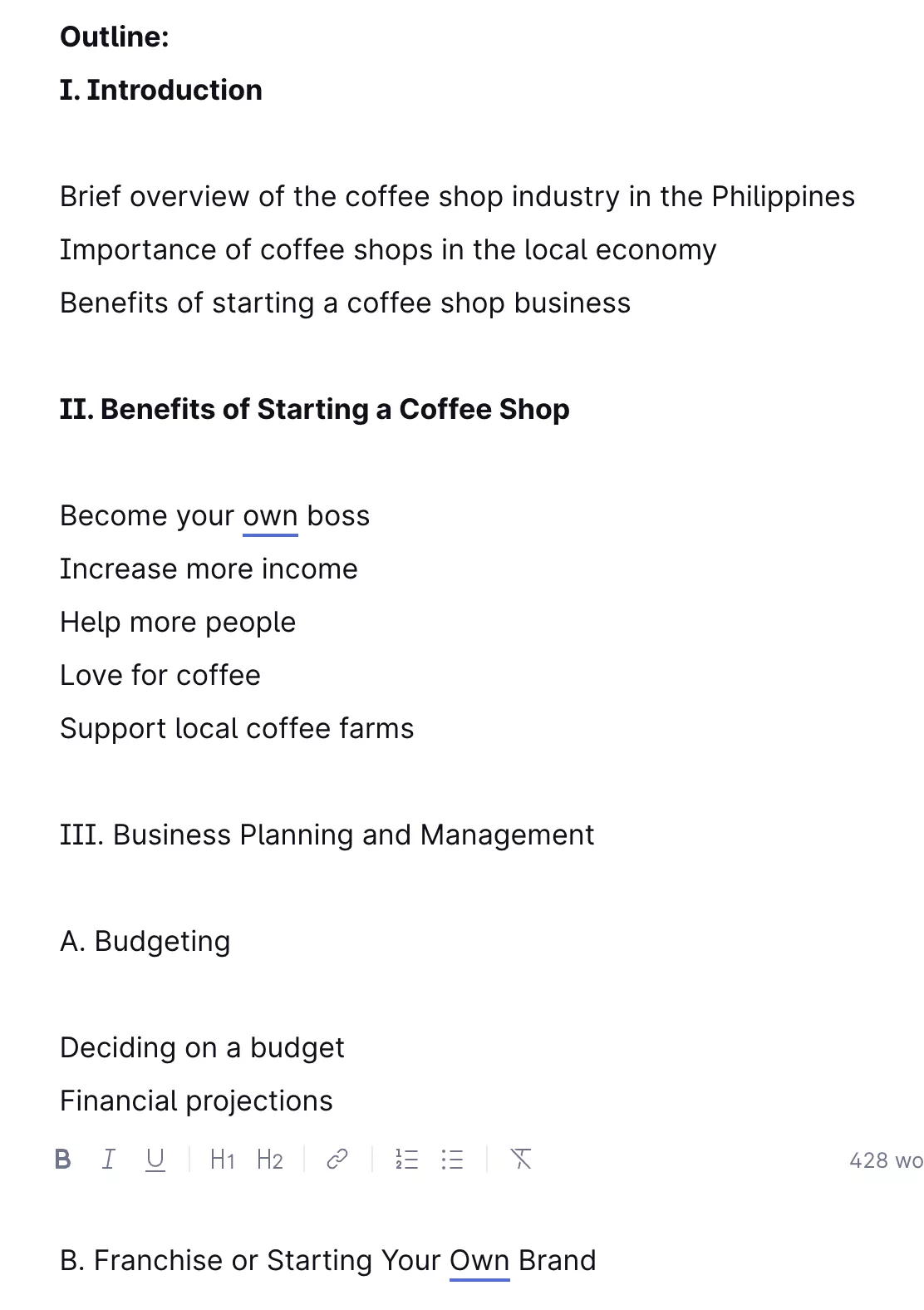
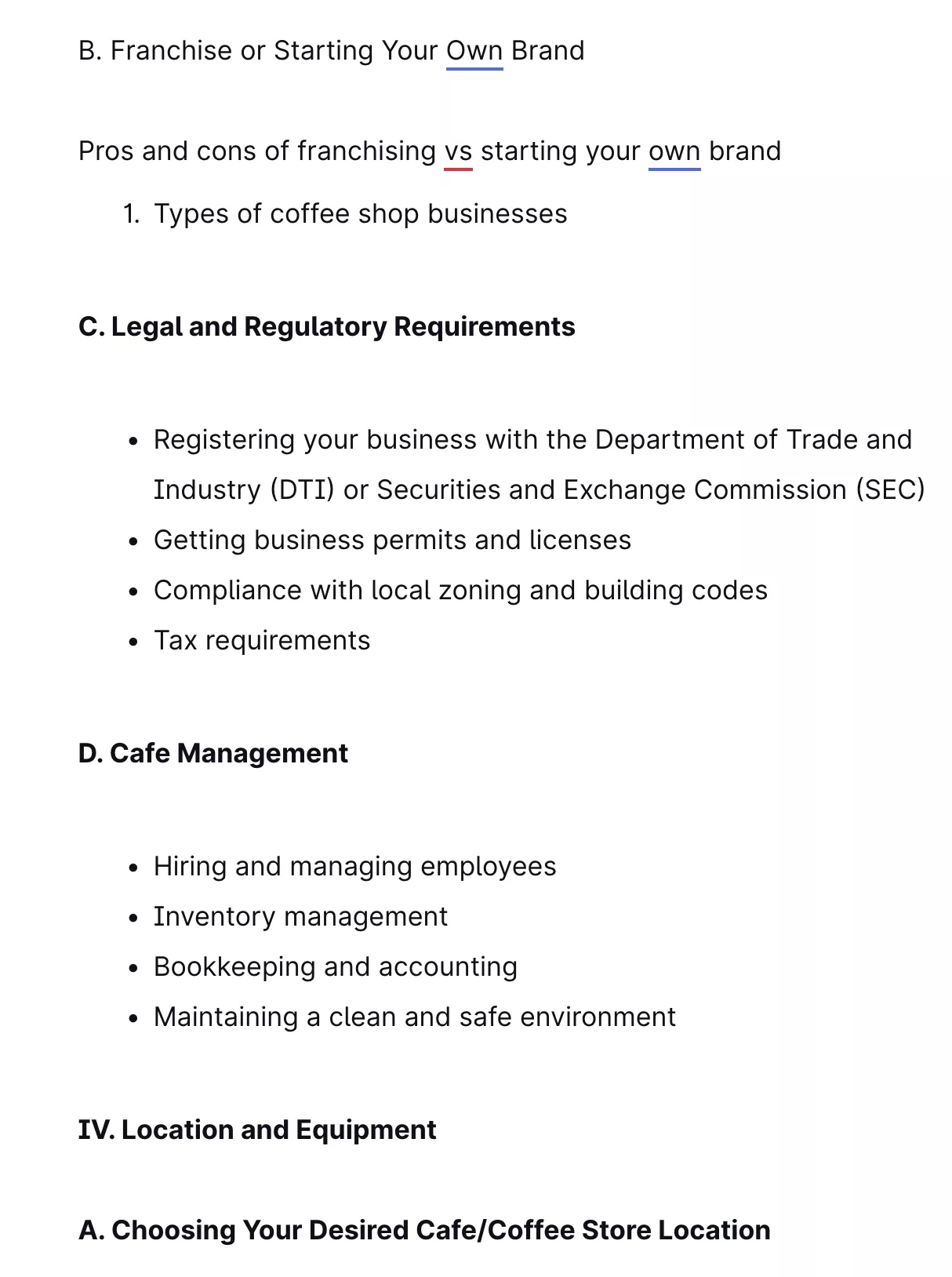
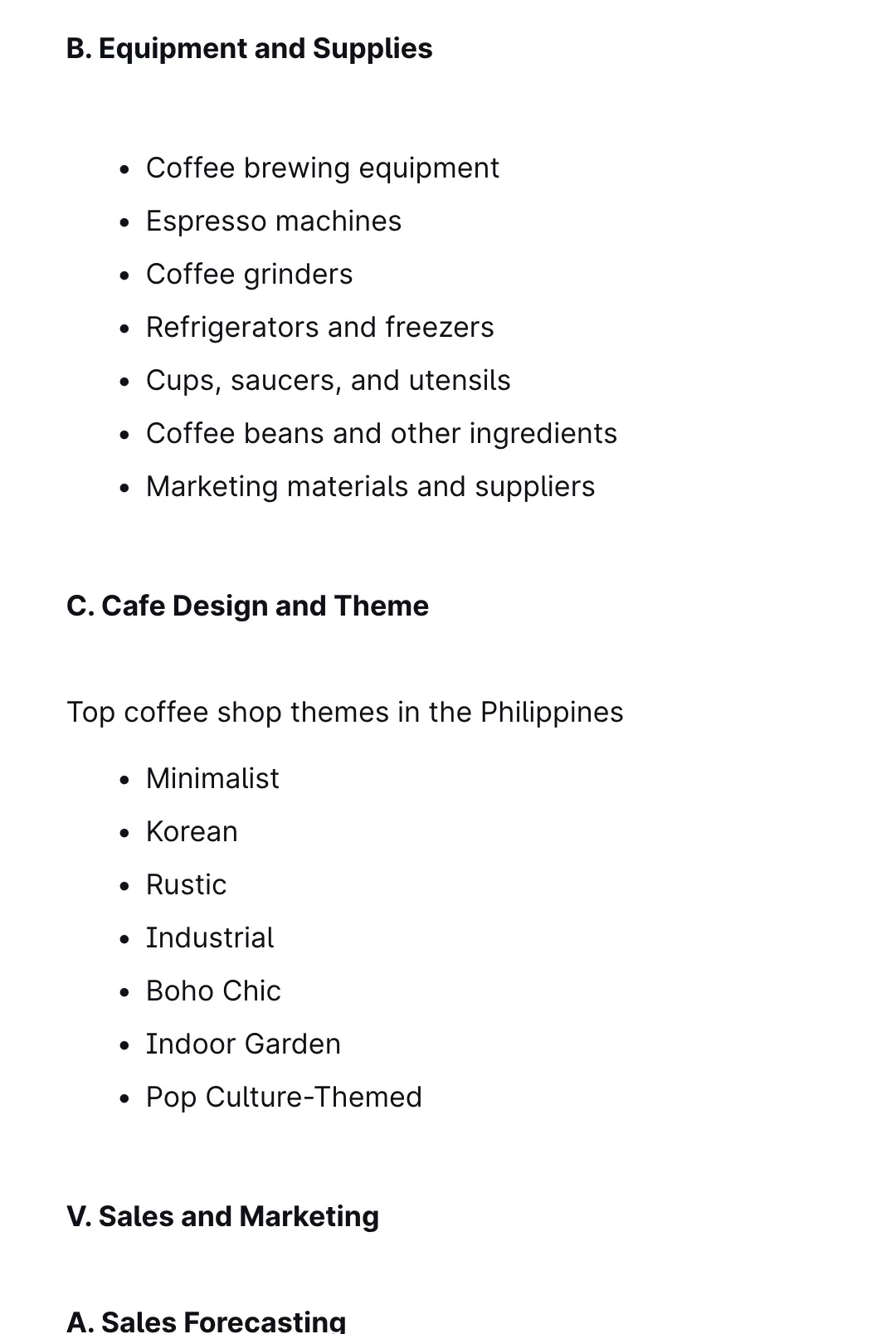
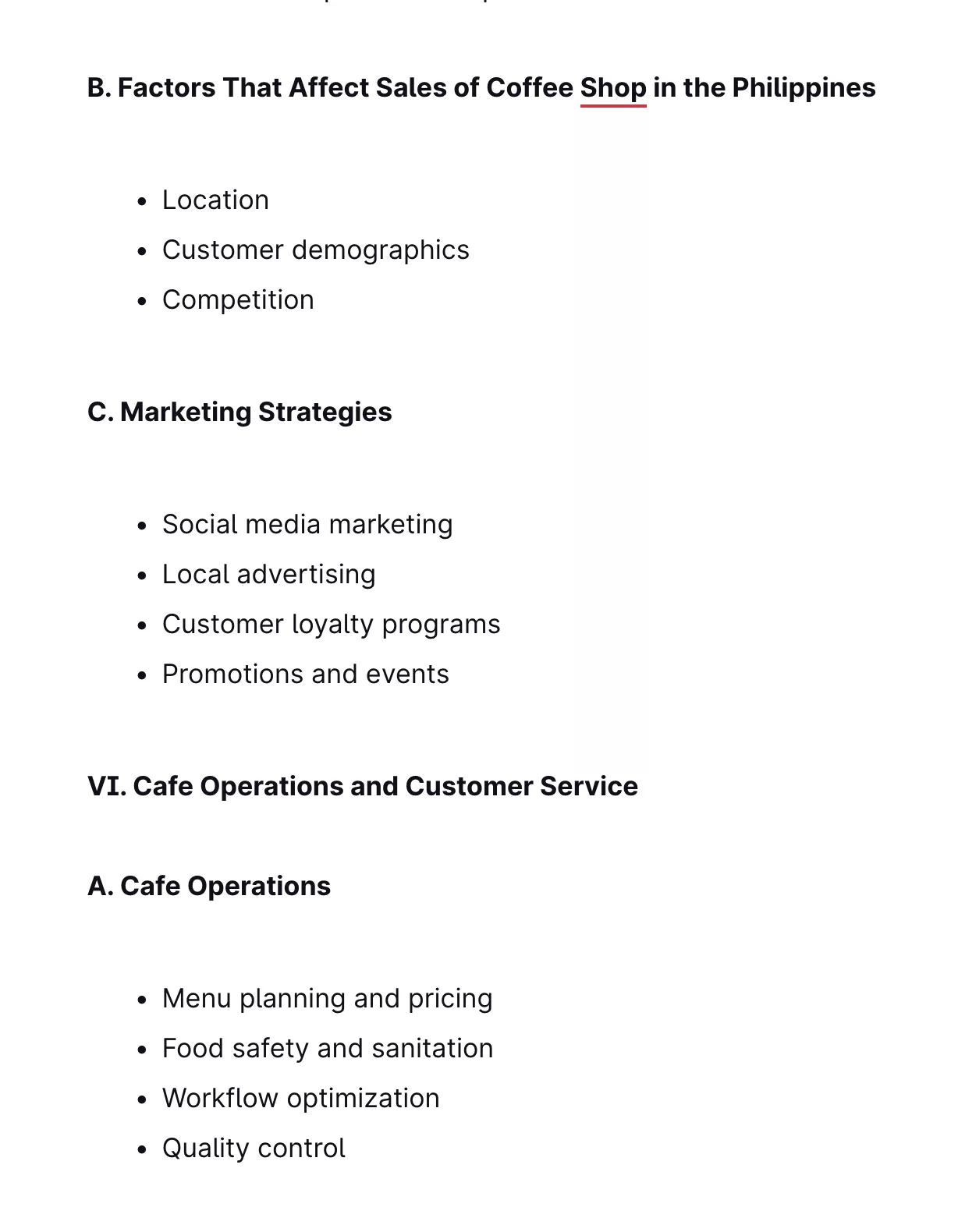
I even add unique headings missing from these articles that are useful for my readers.
You can check related searches at the bottom of the search engine results pages (SERPs) to make it more comprehensive. These are topics that Google finds relevant to the keyword you’re targeting.
Aim to achieve the average word count for the keyword by checking the top 3 ranking articles. Detailed also has an overview section for its word count.
Create a content brief with target keywords, LSI keywords, and an outline.
Recommending resources for creating content briefs:
4. Write with expertise and experience.
Establish expertise and experience in your content.
Google recognizes that users prefer to receive information from only reliable sources. In recent years, the search engine has focused on this issue with its Search Quality Evaluator Guidelines, a 150-page document used by Google’s search-qualified evaluators who are actual humans rather than an algorithm.
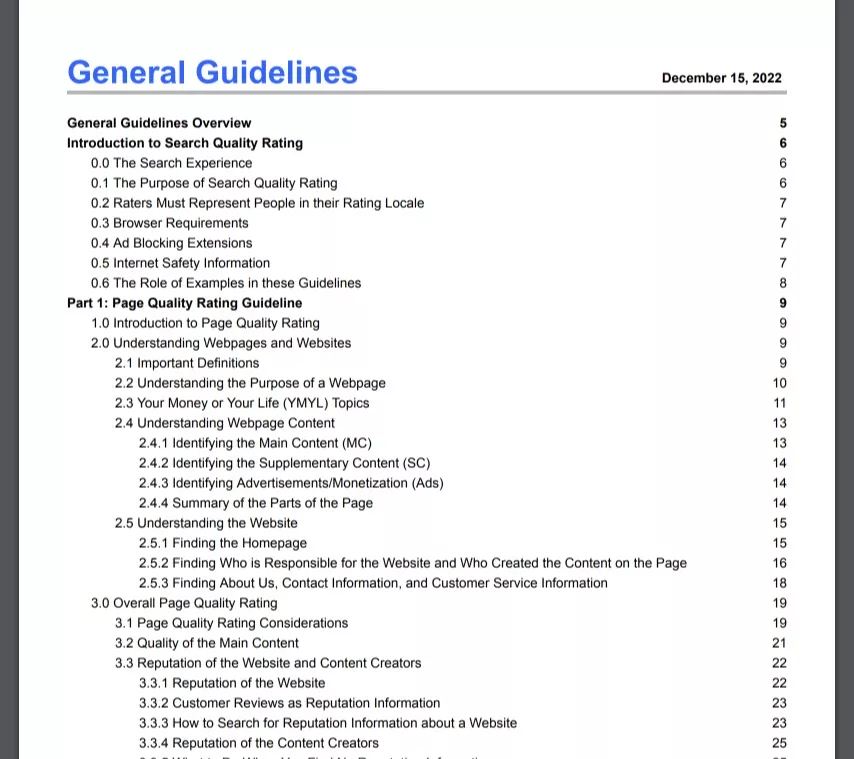
The initial step to writing content with expertise is to have a good introduction.
Hook your readers in the first lines of the page.
Give them the reason why they should be reading your content.
For instance, in my guide on how to start a coffee shop in the Philippines, I start the content with statistics proving how profitable and in-demand a coffee shop business is. This gives a primary reason for readers to read the how-to guide.
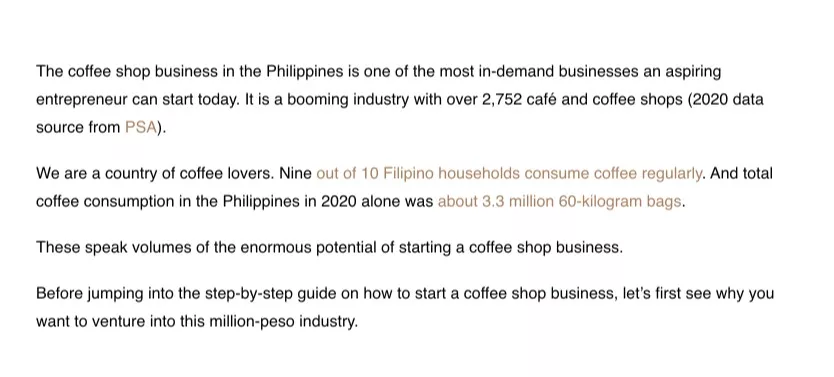
Place the value above the fold.
Here are some tips on writing introduction paragraphs from Matt Diggity:
- Match it with the searcher’s buying cycle.
- Educate with facts.
- Appeal to the emotion of fear to continue reading. (e.g., DUI cases that don’t have legal representation typically have 25% more expensive fees and license revocations of twice as long).
- Tease your article’s content about what they are about to read.
- Establish why you’re trustworthy and authority in writing about the topic.
Once you’ve written an introduction, your obvious next step is to write the meat of the content.
Essentially, we’ve included in our processes a huge percentage of the experience of the authors/writers in their SEO content, which significantly increases the credibility and ranking potential of the page.
Identify a unique differentiating angle.
See how your competitors attack their content writing. Determine a unique angle where you can bring internal expertise into your content, differentiating you from all other ranking pages.
For instance, we’ve tested products to create the “best espresso machines in the Philippines”. By testing it first-hand, we have enough information to conclude which espresso machines best fit a specific target audience (i.e., baristas, home coffee lovers, etc.).
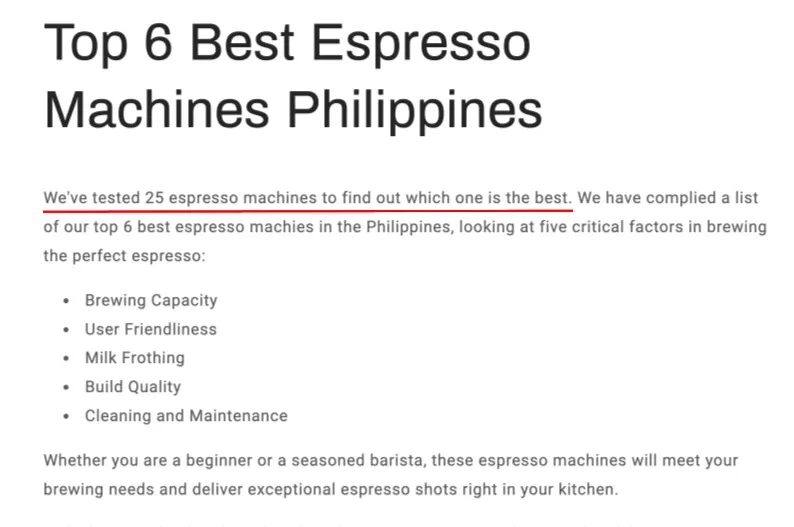
Another example is we added one recommendation of an affordable Point of Sale (POS) system for running a coffee shop business.
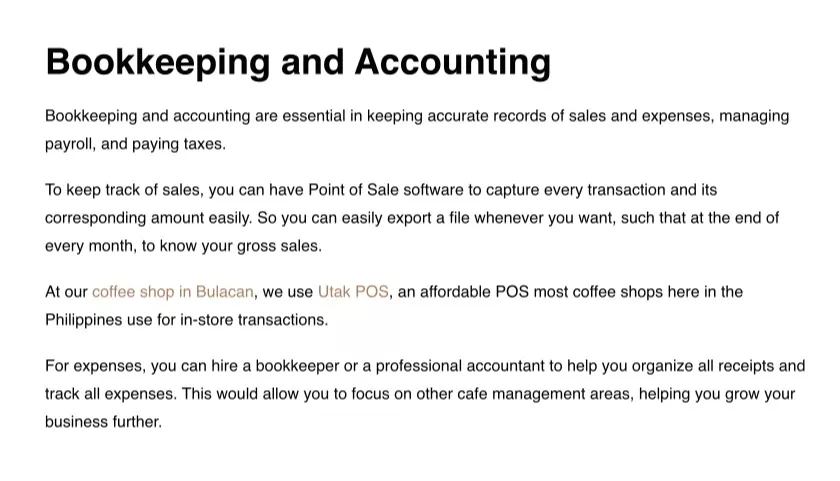
Doing it allows us to separate from all other ranking pages for the target keyword, as most have generic listings of specifications, product features, and product details. All of these can quickly be done with AI tools like ChatGPT.
Here are some more ways to input “experience” and “expertise” into your content:
- Input statistics and internal data are relevant and will highly support your topic. Make it easy for readers to understand the data by summarizing the most essential points.
- Include case studies and personal experiences as you write content—some observations, details, and actionable tips that might be helpful to your readers.
- Add offline resources that aren’t available online in your space. This gives you the unique advantage of covering important topics and points demonstrating your expertise.
Do Basic On-page SEO
You may be surprised I didn’t start with this best SEO practice. The main reason is that I don’t want you to focus much on keyword prominence.
You focus on writing the best coverage about the topic without bothering on-page SEO. After all, it is all about including the keyword in the most prominent places:
- Title tag
- Meta description
- URL slug
- H1 and H2s
- Body text
- First sentence
Add internal links and credible sources.
Internal linking is integral to SEO as it helps users navigate through your site quickly, boosting indexation and facilitating PageRank flow between pages.
Internal links can pass more link equity to destination pages, making them more capable of ranking for their target keywords.
At best, internal linking is a simple process. It links to other related web pages that are about the anchor text.
Here are some internal linking best practices:
- Include the right amount of internal links on your content, preferably one internal link for every 300 words.
- Use descriptive anchor texts to link to your destination page.
- Ensure internal links are dofollow.
- Check if you’re linking directly to a page with a 200 OK server response code. Avoid linking to 404 not found or 301/302 redirected URLs at all costs.
Aside from adding internal links, you should be linking to external resources you’ve found helpful for your readers, referencing them for a more detailed explanation of the subtopic.
Contrary to the belief that it dilutes link equity through your website when linking out to external pages, it is more advantageous to your content from an engagement perspective as you’re giving your search users as much value as possible.
Apply NLP to quick answers.
Theoretically, if you can apply natural language processing to your content, Google will be more likely to reward your content with snippets and better rankings.
Aim to optimize your content for NLP by echoing back the question, giving a direct answer, and mentioning the correct unit.
We’ve ranked our guide for featured snippets by applying NLP to every answerable question.
We review each “people also asked questions” and answer them directly in the content. We answer questions like “why is coffee shop a good business in the Philippines?” straight and with backed-up statistics.
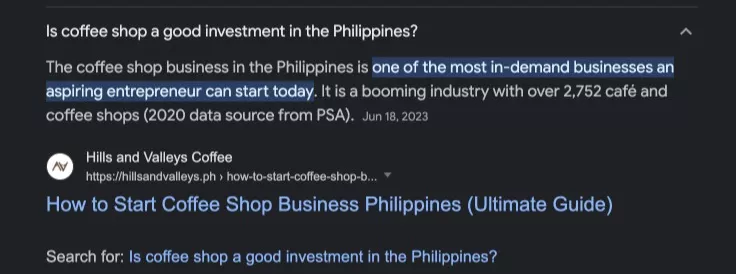
5. Fact-check and proofread everything.
After you’ve written your content, it’s time to edit and proofread everything.
Readability
Make your content easier to read and digest.
Avoid having large blocks of text. Have headings, bullet points, short paragraphs, and multimedia.
Simplify your content. Ask yourself, is your content written for an average person or someone with a technical background (i.e., a doctor)?
Most readers are average in any industry, so you need to write for them rather than for expertise unless your primary target is experts within your space.
Add images and videos to supplement your content, making it easier for readers to follow. For instance, “how-to” guides or tutorials need screenshots to show specific steps of the process.
6. Publish and promote content.
Publishing content is only 50% of SEO content writing.
Invest in getting visibility from search and social media channels to drive readers to your content.
Place in the main navigation menu
If you want to rank a newly-published product and collection page or new blog post, include it in your site’s main navigation menu. Published blog posts are best to have in a hub/learn section.
Pages in the main navigation menu are easier for Google to find and, therefore, see a boost in keyword rankings.
Add internal links from other pages.
Return to your site’s old content and include internal links to your newly published page. Do a Google search for site:[domain.com] “topic” and find any relevant blog posts you can edit to add internal links.
You can also use Ahrefs to find your best linked-to pages. These strong pages can pass robust link equity to your newly published page. Find a relevant page among them and include an internal link to your new content.
Promote via guest posts.
If you’re writing external content for other blogs (guest posts), you can build inbound links to your new content to increase its ranking power and, therefore, improve its position on Google’s search engine results pages (Google SERPs).
That’s it. Learn how to write content that ranks using the six-step process outlined above.
If you need help with writing content, see our content writing and content marketing services.
The Author
Venchito Tampon Jr
Venchito Tampon is a Filipino Motivational Speaker, Corporate Trainer, and a Leadership Speaker in the Philippines. He is the CEO and Co-Founder of SharpRocket, a link building agency. With a decade of experience, Venchito has a proven track record of leading hundreds of successful SEO (link builidng) campaigns across competitive industries like finance, B2B, legal, and SaaS. His expert advice as a link building expert has been featured in renowned publications such as Semrush, Ahrefs, Huffington Post and Forbes. He is also an international SEO spoken and has delivered talks in SEO Zraz, Asia Pacific Affiliate Summit in Singapore, and Search Marketing Summit in Sydney, Australia. Check out his other businesses, Hills & Valleys Cafe, Blend N Sips and Saas Pursuit.
How our LINK BUILDING AGENCY builds 250 links/mo consistently using Predictable Link Building Methodology™…
- Using a SIMPLE and PROVEN system
- Using a SCALABLE strategy
- No private blog networks
- No creepy outreach emails
